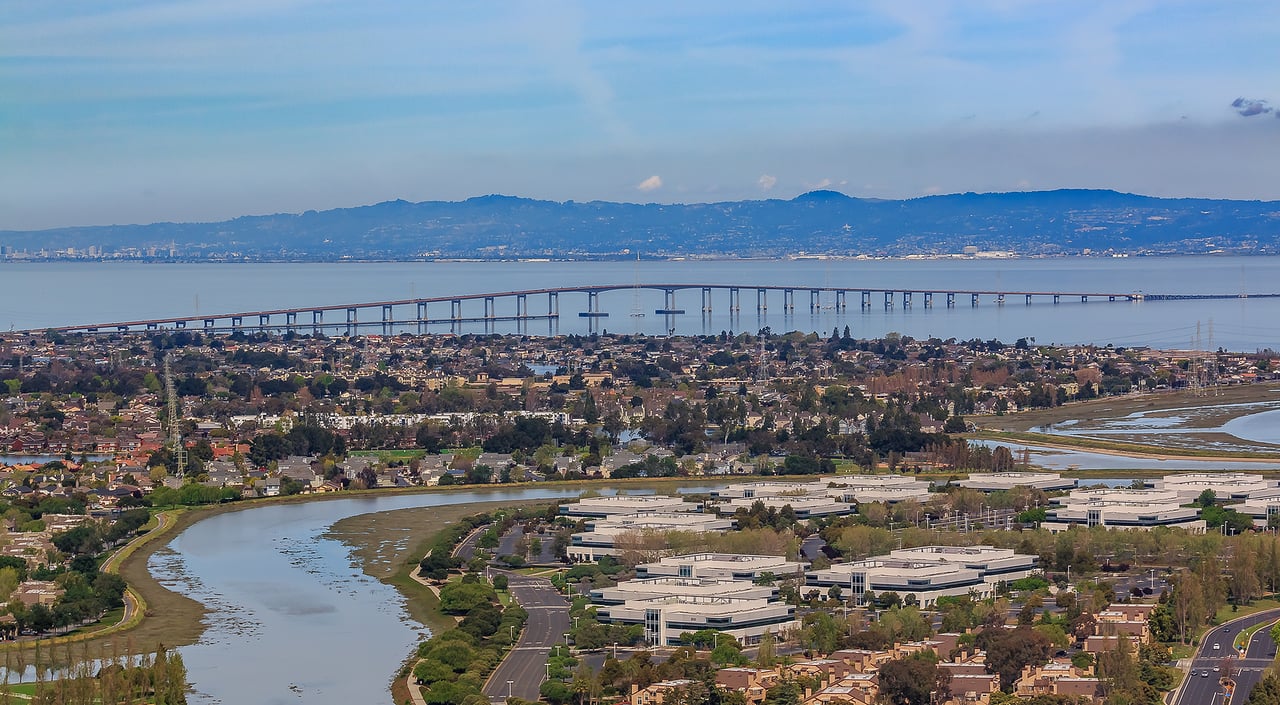Timing can make or break your real estate transaction. Just like the stock market, the housing market goes through predictable cycles—sometimes it’s a seller’s paradise, other times it’s a buyer’s market. Knowing when to buy or sell can mean the difference between getting top dollar or leaving money on the table. But these real estate market cycles aren't always obvious. They can shift gradually or change due to factors like economic conditions, interest rates, or even the time of year. For buyers and sellers alike, understanding the real estate market cycles is critical to making informed, strategic decisions.
In this blog, we'll dive into the different phases of the real estate cycle, discuss the ideal times to buy or sell a home, and offer expert tips on how to navigate the ever-changing market.
What Are Real Estate Market Cycles?
A real estate market cycle refers to the natural ebb and flow of property values over time. Various economic factors, such as supply and demand, interest rates, and economic growth shape these cycles. Understanding these market cycles is crucial because they help buyers and sellers predict the best times to make a move. In regions like the Bay Area, where housing demand is consistently high, the market can fluctuate in ways that impact property values, sometimes dramatically.
Real estate cycles typically follow four phases: recovery, expansion, hyper-supply, and recession. These phases can influence everything from the number of homes available on the market to how long properties stay listed and, most importantly, what prices buyers and sellers can expect.
1. Recovery/Rebound
The recovery/rebound phase occurs after a downturn or recession when the market begins to stabilize. During this phase, home prices may still be low, but interest rates are often reduced to stimulate buyer activity.
With its booming tech industry, the Bay Area market has experienced recoveries where demand quickly rebounds as economic conditions improve. During recovery, inventory levels may still be relatively high, but buyers can take advantage of lower prices and less competition.
2. Expansion
Expansion happens when the market begins to heat up—demand for homes increases, driven by economic growth and rising consumer confidence. In the Bay Area, this phase often coincides with tech booms or population growth, which can push home prices higher as more people look to settle in cities like San Francisco, San Jose, and Fremont. New construction may start to rise during this period to meet the growing demand.
For buyers, this phase can mean more competition and rising prices, while sellers can take advantage of a market where homes sell quickly and at a premium.
3. Hyper Supply
The hyper supply phase is when supply begins to outpace demand. More homes become available on the market, either due to overbuilding or a slowing economy. This phase can create a market peak, where property prices hit their highest point but begin to stagnate or slightly decline.
In the Bay Area, which has a high cost of living and stringent zoning regulations, hyper-supply may not happen as frequently as in other regions. However, when it does, it can signal that the market is shifting from being seller-friendly to buyer-friendly. Sellers during this phase might need to lower prices or offer incentives to attract buyers.
4. Recession
A recession in the real estate market occurs when prices start to fall, and homes stay on the market longer. Fewer people are buying, often due to economic uncertainty or rising interest rates, and property values drop as demand decreases.
In the Bay Area, recessions tend to be shorter, as the local economy’s resilience often pulls the market out of downturns faster than other regions. However, during this phase, both buyers and sellers need to be cautious. Buyers can find good deals, but they should be aware that prices could continue to fall. Sellers might struggle to get the price they want for their homes, and properties may take longer to sell.
Timing Your Transaction
Understanding the phases of the real estate market cycle can help you make smarter decisions, whether you’re buying or selling. For instance, buying during a recession or early recovery phase can mean getting a home at a lower price, while selling during an expansion phase can help you maximize your property’s value.
In the Bay Area, where the market moves quickly and prices are typically high, being aware of these cycles can make a big difference in your real estate strategy.
What’s Happening in the Bay Area Real Estate Market Right Now? Updated October 2024
As of October 2024, the Bay Area real estate market is in a rebound phase, showing signs of recovery after a typical seasonal slowdown during the summer. Home prices have started to rise again, with approximately a 3% increase in median prices from August to September 2024. This points to a stabilization, though it’s worth noting that the market may experience another cooling as the winter months approach, historically leading to slower sales and potentially lower prices.
For sellers, there is a critical window before the holiday season when homes still have the chance to sell quickly at solid prices. Waiting too long could mean facing fewer buyers and softer pricing.
Overall, while the market has shown resilience, it remains in flux, with a mix of factors like interest rates, inventory levels, and seasonal trends influencing its direction.
When is the Best Time to Buy? Catch the Market on the Upswing
Buying in a Recovery or Recession Phase
If you’re looking to buy a home, the recovery or recession phases of the real estate cycle are often the best times to make your move. Home prices are typically lower during these periods, and there is less competition from other buyers. The Bay Area, known for its competitive housing market, may see fewer bidding wars during these phases, allowing buyers to negotiate better deals.
Why Recovery and Recession Are Ideal for Buyers:
- Lower Prices: Home prices tend to drop during recessions and early recovery phases as demand decreases. This allows buyers to get more value for their money, especially in a high-cost area like the Bay Area.
- Fewer Bidding Wars: With fewer buyers in the market, you’re less likely to face intense bidding wars, which can drive prices up in more competitive phases.
- Favorable Mortgage Rates: Mortgage rates are often lower during recessions as governments attempt to stimulate the economy. This gives buyers the opportunity to lock in favorable financing terms that can save them thousands over the life of a loan.
Example: Buying during the 2008 financial crisis, for instance, would have allowed buyers to purchase Bay Area properties at a fraction of their previous market value. Many who bought during this time saw significant savings as home values rebounded in the following years.
Risks of Buying in a Recession
While the potential for savings is high, buying during a recession comes with risks. The market can be unpredictable, and there’s a possibility that home values could continue to drop after your purchase. Buyers need to be prepared for market volatility and have a long-term investment strategy in place.
Actionable Tip
To make the most of a buyer’s market during these phases, look for motivated sellers who are eager to close deals. These sellers may offer more flexible terms, including price reductions, closing cost assistance, or other incentives. Negotiating favorable terms during this time can help you secure a great property at an even better price.
When Should You Sell? Timing the Market for Maximum Profit
Selling During Expansion or Hyper Supply Phases
If you’re thinking of selling, the expansion and hyper-supply phases of the real estate market offer the best opportunities to maximize your return. In the Bay Area, where home prices can rise quickly, these phases often mean higher demand and better offers from buyers.
Expansion Phase: During expansion, the market is characterized by strong demand, rising prices, and competitive offers. With more buyers entering the market, homes tend to sell quickly, often at or above the asking price. The Bay Area’s economy, particularly driven by tech and innovation, often fuels this demand, pushing property values higher.
Hyper-Supply Phase: In the hyper-supply phase, home prices typically peak as more properties flood the market. However, demand may start to taper off as inventory grows. Sellers can still take advantage of high prices, but the window to get the best deal may begin to close. The key is to list your property early in this phase, before the market starts to cool.
Why These Phases Are Ideal for Sellers:
- High Demand: During the expansion phase, eager buyers create a seller’s market, allowing you to sell quickly and often for a premium.
- Price Inflation: As prices rise, sellers in the Bay Area can take advantage of the region’s rapid property value increases, especially in cities like San Francisco, Fremont, and Palo Alto.
Timing Risks
Timing is crucial. Selling too late during the hyper-supply phase may mean missing the market’s peak, where prices begin to drop due to oversupply. Homes may stay on the market longer, and buyers may start negotiating for lower prices as inventory increases.
Actionable Tip: To ensure you list at the right time, use market reports and data to track home price trends in your area. Keep an eye on key indicators like inventory levels, days on the market, and price appreciation. Working with a knowledgeable Bay Area Realtor like Joseph Sabeh can help you navigate these phases and maximize your selling potential in the competitive Bay Area market.
How The Seasons Affect the Real Estate Cycle
Spring & Summer: The Busiest Seasons
Spring and summer are traditionally the most active seasons for both buyers and sellers in the real estate market, especially in high-demand areas like the Bay Area. Warmer weather, longer daylight hours, and the desire for families to move before the start of the school year contribute to increased market activity during these months.
- Why These Seasons Are So Busy: The pleasant weather makes it easier to tour homes, and many families prefer to relocate during the summer to avoid disruptions in the school calendar. As a result, more homes are listed, and more buyers are actively searching.
- Tip for Buyers: Be prepared for increased competition. With more buyers in the market, homes often receive multiple offers, which can drive prices up. Make sure your finances are in order and be ready to act quickly if you find a property you like.
- Tip for Sellers: This is the ideal time to list your home, as properties often sell faster and at higher prices due to the increased demand. Homes that are move-in ready and well-presented can stand out in this competitive market, so focus on curb appeal and staging.
Fall & Winter: Slower Months
Fall and winter tend to be quieter seasons in real estate, with fewer listings and less buyer activity. The cooler weather, holiday commitments, and end-of-year events lead many buyers and sellers to delay their plans until spring.
- Why Activity Slows: The Bay Area’s relatively mild winters don’t have the harsh weather of other regions, but the holiday season and shorter daylight hours still play a role in slowing market activity. Many people are focused on holiday gatherings or end-of-year responsibilities and are less likely to be in the market for a new home.
- Tip for Buyers: Less competition during these months can work in your favor. Fewer buyers in the market means you have more negotiating power, and sellers may be more willing to accept lower offers, especially if their home has been on the market for a while.
- Tip for Sellers: While it may take longer to sell a home in fall or winter, it’s important to remain patient. Serious buyers who are looking during these slower months are often motivated to close quickly, which could lead to a smoother transaction if you’re willing to wait for the right offer.
By understanding how seasonality affects the real estate market in the Bay Area, both buyers and sellers can make strategic decisions to maximize their opportunities, regardless of the time of year.
Why Working With a Realtor is Crucial in Every Stage of the Real Estate Market Cycle
Navigating the complexities of the real estate market cycle is challenging. This is where working with a knowledgeable realtor becomes invaluable. Whether you’re buying or selling, the market can shift rapidly, and having expert guidance is crucial to make the best decisions.
Realtors offer more than just help with listings—they bring critical market data, timing strategies, and local expertise to the table. For instance, a skilled realtor can provide you with up-to-date market reports, identify trends, and explain how these might affect your buying or selling decisions. In the Bay Area market, timing is everything. An experienced realtor can help you determine the current phase of the real estate cycle in your specific area, whether it's a recovery, expansion, hyper-supply, or recession.
Additionally, realtors personalize their advice based on your goals. If you're looking to buy, they’ll help you identify the right time to get the best deal and avoid market risks. For sellers, realtors can offer strategies to maximize your home’s value by leveraging market trends, buyer demand, and pricing strategies that suit the market’s current state.
Partnering with a realtor like Joseph Sabeh ensures that you have expert support throughout every stage of the real estate cycle, giving you the confidence to make well-informed, strategic moves.
Make Your Move with Expert Timing and Local Knowledge
Understanding the phases of the real estate market cycle—recovery, expansion, hyper-supply, and recession—can help you make informed decisions when buying or selling a home.
If you’re looking to make a move in the Bay Area, timing is everything. The Joseph Sabeh Group can provide expert guidance, local market data, and personalized strategies to help you navigate every stage of the real estate cycle. Reach out today for a comprehensive market analysis and tailored advice on when to buy or sell. Contact Joseph Sabeh at (510) 673-2083 or email [email protected] to get started.







